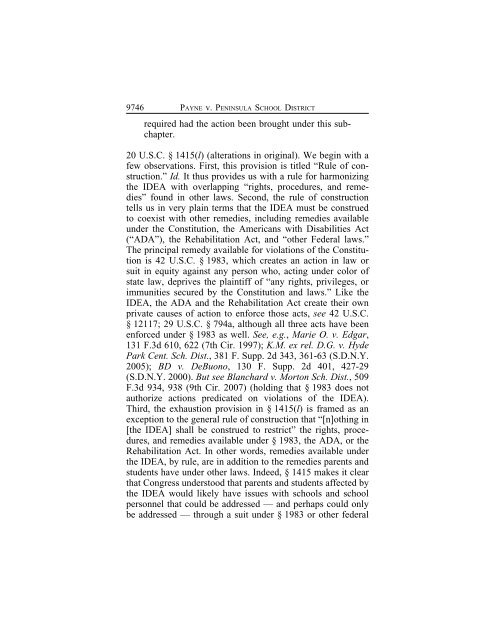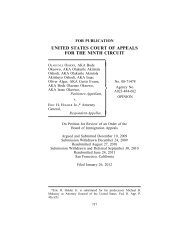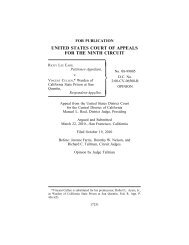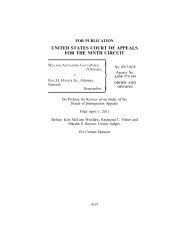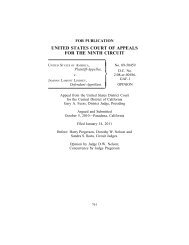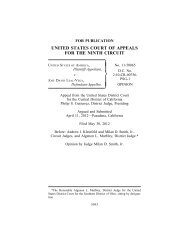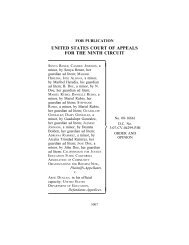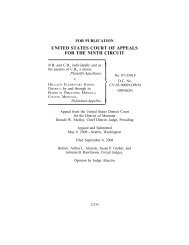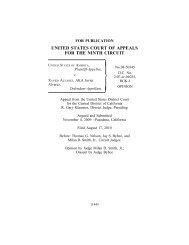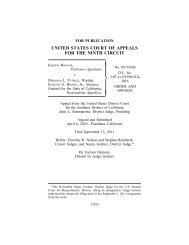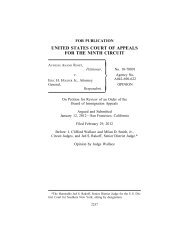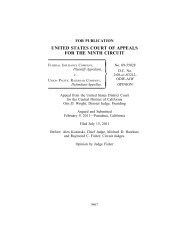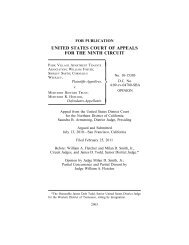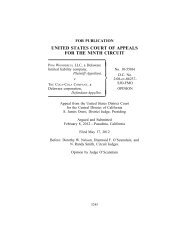UNITED STATES COURT OF APPEALS FOR THE NINTH CIRCUIT
UNITED STATES COURT OF APPEALS FOR THE NINTH CIRCUIT
UNITED STATES COURT OF APPEALS FOR THE NINTH CIRCUIT
Create successful ePaper yourself
Turn your PDF publications into a flip-book with our unique Google optimized e-Paper software.
9746 PAYNE v. PENINSULA SCHOOL DISTRICT<br />
required had the action been brought under this subchapter.<br />
20 U.S.C. § 1415(l) (alterations in original). We begin with a<br />
few observations. First, this provision is titled “Rule of construction.”<br />
Id. It thus provides us with a rule for harmonizing<br />
the IDEA with overlapping “rights, procedures, and remedies”<br />
found in other laws. Second, the rule of construction<br />
tells us in very plain terms that the IDEA must be construed<br />
to coexist with other remedies, including remedies available<br />
under the Constitution, the Americans with Disabilities Act<br />
(“ADA”), the Rehabilitation Act, and “other Federal laws.”<br />
The principal remedy available for violations of the Constitution<br />
is 42 U.S.C. § 1983, which creates an action in law or<br />
suit in equity against any person who, acting under color of<br />
state law, deprives the plaintiff of “any rights, privileges, or<br />
immunities secured by the Constitution and laws.” Like the<br />
IDEA, the ADA and the Rehabilitation Act create their own<br />
private causes of action to enforce those acts, see 42 U.S.C.<br />
§ 12117; 29 U.S.C. § 794a, although all three acts have been<br />
enforced under § 1983 as well. See, e.g., Marie O. v. Edgar,<br />
131 F.3d 610, 622 (7th Cir. 1997); K.M. ex rel. D.G. v. Hyde<br />
Park Cent. Sch. Dist., 381 F. Supp. 2d 343, 361-63 (S.D.N.Y.<br />
2005); BD v. DeBuono, 130 F. Supp. 2d 401, 427-29<br />
(S.D.N.Y. 2000). But see Blanchard v. Morton Sch. Dist., 509<br />
F.3d 934, 938 (9th Cir. 2007) (holding that § 1983 does not<br />
authorize actions predicated on violations of the IDEA).<br />
Third, the exhaustion provision in § 1415(l) is framed as an<br />
exception to the general rule of construction that “[n]othing in<br />
[the IDEA] shall be construed to restrict” the rights, procedures,<br />
and remedies available under § 1983, the ADA, or the<br />
Rehabilitation Act. In other words, remedies available under<br />
the IDEA, by rule, are in addition to the remedies parents and<br />
students have under other laws. Indeed, § 1415 makes it clear<br />
that Congress understood that parents and students affected by<br />
the IDEA would likely have issues with schools and school<br />
personnel that could be addressed — and perhaps could only<br />
be addressed — through a suit under § 1983 or other federal


